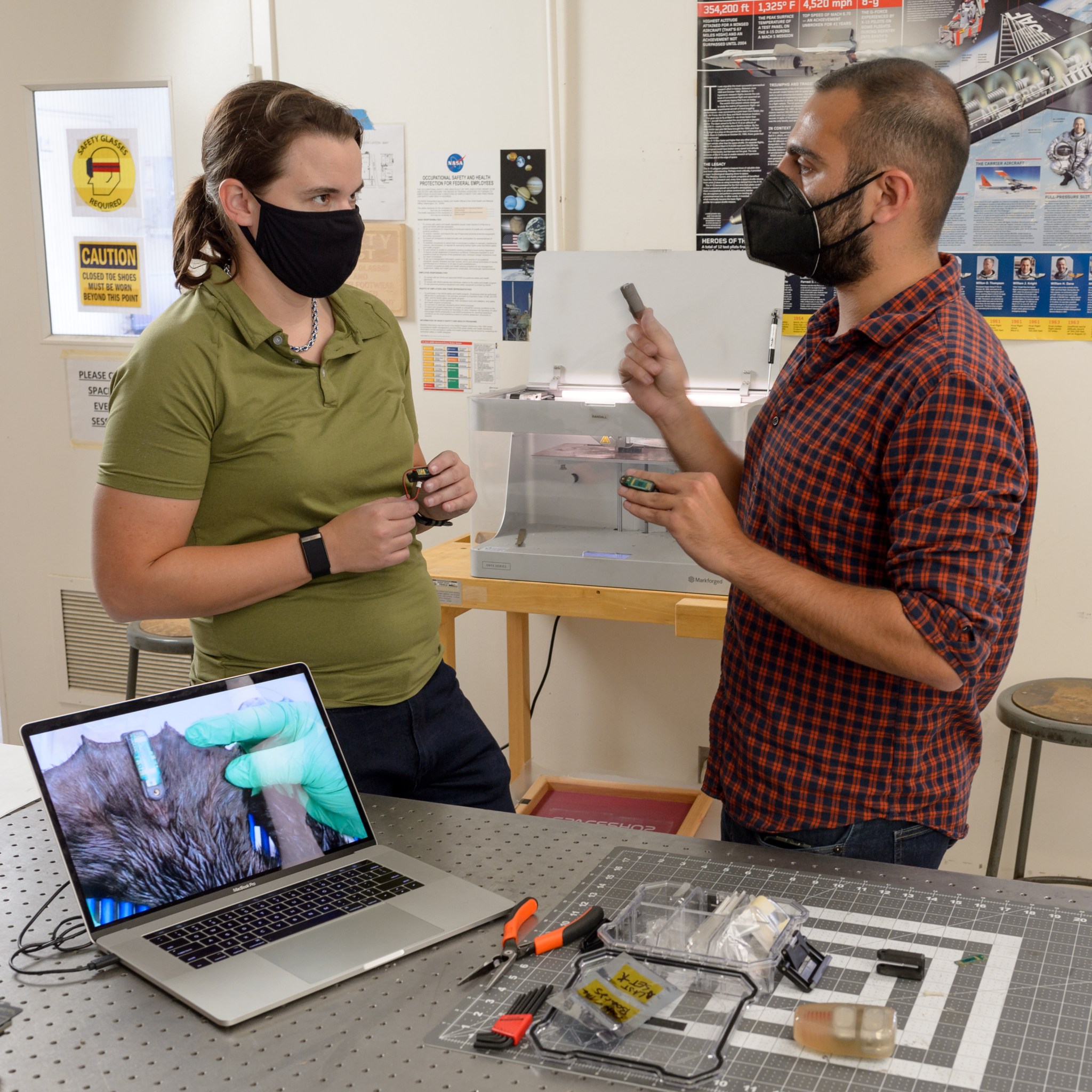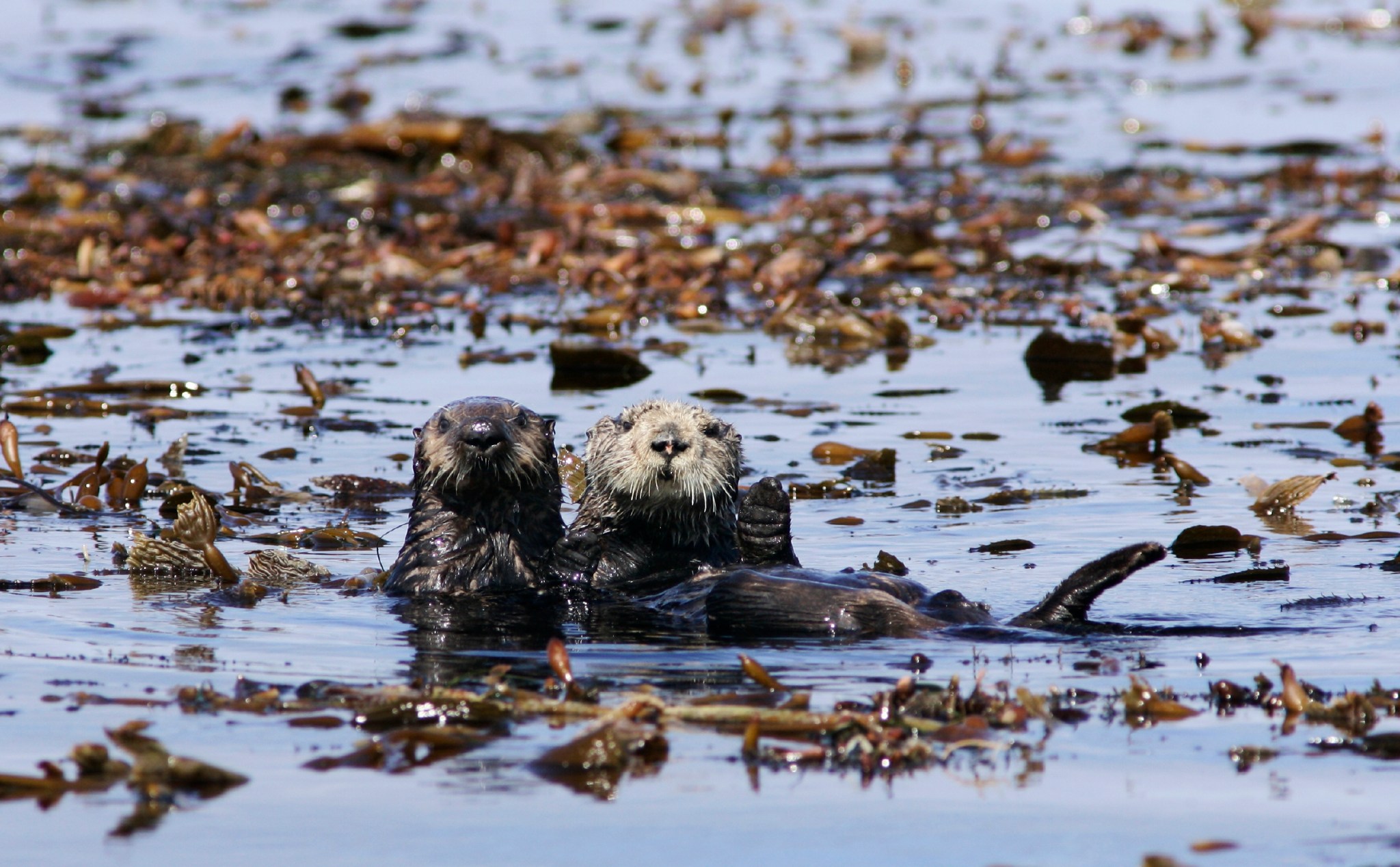When you think of technology development at NASA, your first thought may be spacecraft and satellites. But one of the latest inventions to come out of the agency’s lead maker space isn’t made for astronauts or engineers – but for sea otters.
Sea otters are important mammals in marine ecosystems and are essential to maintaining balance in kelp forests. That’s why the Space Shop, a maker space at NASA’s Ames Research Center in California’s Silicon Valley, is developing a modern tracking device designed to humanely fit onto the hind flippers of sea otters. This new and improved tracking device is still being tested, but once it’s ready to be deployed, scientists will be able to track sea otter populations with far more precision and frequency than was previously possible. In the future, the same technology could be used to track other wild animals.
“We’re bringing state-of-the-art tech to the challenge of tracking wildlife,” said Chad Frost, the principal investigator for the project at Ames. “Using modern networking technologies and economical prototyping techniques like 3D printing, this collaboration is creating a new kind of tag that will fundamentally change the scale of science that can come out of tracking wildlife like sea otters.”
The project draws on NASA’s electronics design and fabrication capabilities while partnering with the United States Geological Survey and the Monterey Bay Aquarium for their scientific expertise. The tags have also gone through initial testing with sea otters at the Monterey Bay Aquarium, with more to follow as the project develops.
Previous generations of trackers for sea otters were bulky and expensive, depended on special batteries, and only provided an approximate location of the otter. Today’s technology offers far better solutions, creating a network of animal trackers that can deliver accurate, GPS-enabled otter locations more frequently, in a much smaller, low-cost, and minimally invasive solar-powered tag.
Printing a New Tag

The Space Shop at Ames is one of NASA’s main facilities for plastic 3D printing, making it the ideal place to prototype and produce the otter tag’s housing, which keeps the electronics of the tag safe and secured to the otter.
“Designing a tag for an otter is very different than normal electronics enclosures,” said Elizabeth Hyde, a research engineer with USGS who previously worked at NASA on this same project. “Not only do you have the rigors of a marine environment to deal with, but also the unique anatomy and behavior of the otters as well.”
The team had to fabricate a device to withstand salt water and the sea otter’s strong jaws and teeth, designed for crushing the hardest of shellfish, all while not harming the otter and protecting the electronics that are housed inside.
Early prototypes were quickly mocked up using 3D printing, with cheaper materials to experiment with different designs, iterating to find the exact design that works for scientists and the otter.
Then, the team broached the question of what permanent material to use. It needed to be something flexible enough to withstand impacts without breaking, and be strong and durable. The team converged on a material mostly made of nylon, with carbon fiber particles as well for added strength.
“This was a really exciting design challenge for us,” said Alex Mazhari, manager at the Space Shop’s Rapid Prototyping Lab. “Being able to rapidly prototype a cost-effective solution to enable better science speaks to the value of the Space Shop not just for NASA, but our partners as well.”
A Key to Marine Ecosystems
Sea otters are what are known as a keystone species. That means that their effect on local ecosystems is especially important, and that changes to the sea otter population can have a cascading impact. For example, a primary food source for otters are sea urchins, which consume kelp. Without sea otters, kelp forests can be totally depleted by urchin populations allowed to surge in the absence of a major predator.
Beyond being a home for all kinds of marine life, kelp forests can also absorb carbon dioxide that otherwise lingers in the atmosphere, contributing to global warming.
Understanding how otters and other animals interact with their changing environments is critical for deciphering the impacts of climate change on wildlife and ecosystems. The technology produced for this tag can be repurposed for all kinds of wildlife and will feed into another project being developed in parallel for tracking birds and other animals.
“When we have these significant gaps in tracking, we can miss how these species are interacting with their ecosystems as they are impacted by climate change,” said John Stock, the director of the USGS’s National Innovation Center. “We have a responsibility to understand how endangered and threatened species are reacting.”
The sea otter tags will continue to be tweaked and tested for some time before they are ready to be deployed on sea otters in the wild by the USGS’s Western Ecological Research Center. But once they do, the tags will be the start of a new generation of wildlife tracking and a key tool in understanding how climate change is impacting one of the most important species to our marine environments.
For news media:
Members of the news media interested in covering this topic should reach out to the NASA Ames newsroom.
Author: Frank Tavares, NASA’s Ames Research Center



























